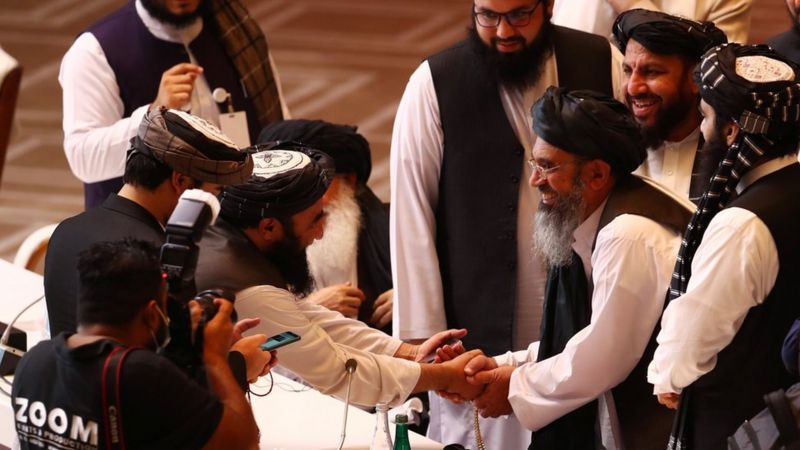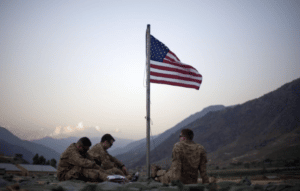
What Can Afghanistan Learn from the Colombian Peace Agreement?

Amidst chaos in Kabul and confusion in Doha, Qatar, the future of the Afghan peace process looks gloomy. The recent wave of attacks on civilians and Afghan armed forces is unprecedented. Despite this, the desirable outcome of peace merits a review of similar peace processes and the chance to draw lessons from other countries’ experiences in reaching a peace accord. Among them, the Colombian government’s peace agreement with the Revolutionary Armed Forces of Colombia (FARC) offers valuable lessons.
In more than 50-days of intra-Afghan talks, Afghan negotiators and the Taliban have not agreed on a framework and agenda. Multiple meetings between contact groups from both sides have ended with no substantial results. The Taliban maintains their stance to recognize the Doha Agreement as the only basis for talks however the Afghan delegation accepts the North Atlantic Treaty Organization (NATO) and United Nations (UN) approved United States-Afghanistan Joint Declaration.
With violence reaching 28 out of 34 provinces, hopes for a ceasefire remain distant. The Taliban has been accused of using violence to gain leverage in the peace talks. Moreover, they are also accused of maintaining ties with Al-Qaeda. Recently, Jens Stoltenberg, the Secretary-General of NATO, called on the Taliban to live up to their commitments and “break all ties with Al-Qaeda and other international terrorist groups.”
Similarities Between Afghanistan and Colombia
Although two very different countries, there are similarities between experiences in Colombia and Afghanistan, especially in regard to peace processes. Both countries have witnessed decades-long insurgency and violence — from the 1970s in Afghanistan and the 1960s in Colombia. Conflict in both countries has been mostly based in rural areas. Drug trafficking has fueled the conflicts and neighbors have supported violence one way or another.
As signs of fatigue and frustration due to the stalemate in Doha begin to emerge, both sides must display strong political will and agree on meeting agendas and discussion frameworks. In order to do so, the following four lessons from the Colombian peace process can be helpful.
1. Maintaining Mutual Trust and Recognition
Despite their commitments to reduce violence, the Taliban have escalated violence — killing 260 civilians in the past 50 days. They have not shown any compromise and have recently demanded further prisoners’ release by the Afghan government. They have not accepted the Afghan-US Joint Declaration as a basis for talks and have publicly stated that they do not recognize the Afghan govenment. All of these undermine trust, leaving little room, if any, for talks to progress.
Humberto De La Calle, the former Colombian government chief negotiator, believes that both parties must acknowledge and recognize each other for peace negotiations to be successful. Similarly, Sandra Ramírez, a senator affiliated with the Common Alternative Revolutionary Force (FARC) party, states that political will is a critical factor in peace negations. This will not be formed unless parties establish and maintain trust.
On the other hand, Bernard W. Aronson, former U.S. special envoy to the Colombian peace process, believes that the Taliban may lack a strong consensus for peace. Therefore, they should be treated with dignity during the peace process so that they maintain their momentum for peace.
2. Gaining Support of the International Community
During the opening of intra-Afghan talks, about 20 foreign ministers delivered speeches, which is a substantial sign of support for the process. However, the U.S. special representative for Afghanistan reconciliation, Zalmay Khalilzad, has stated that “The window to achieve a political solution will not stay open forever.” Therefore, both the Afghan government and the Taliban must not take the international community’s support for granted and agree to choose a ‘guarantor’ or facilitator from the international community.
Dag Nylander, the former Norwegian special envoy to Colombia, who facilitated the peace talks between FARC and the Colombian government, believes that ownership and control of the agreement’s outcome must remain with negotiating sides, and the international community assume facilitating roles.
Recent reports from Doha indicate that both sides have accepted Qatar as the facilitator for the intra-Afghan peace talks; however, this role must not be limited to logistics. The Afghan government and the Taliban must capitalize on Norway’s interest and support for the Afghan peace process. Given Norway’s experience in the Colombian peace agreement and its philosophy on peace and reconciliation, it can play a critical role in reaching a framework, setting the agenda, and beyond.
3. Seeking Internal and Regional Consensus
Pakistan has been repeatedly accused of forming and supporting the Taliban since the 1990s. Iran has also been accused of aiding the Taliban in western Afghanistan. Therefore, the support of neighbors, particularly Pakistan, is essential in the Afghan peace process.
Sergio Jaramillo, the former Colombian high commissioner for peace, states that it is vital to turn the vicious circle of aiding and abating the insurgency into a virtuous circle. As a result, the Afghan government should engage more with neighboring countries and reset its relationship with them.
Recent visits of Abdullah Abdullah, Chairman of Afghanistan’s High Peace Council, with representatives from Pakistan, India, and Iran show the importance of the regional consensus on peace. It is expected that he will visit Central Asian countries to earn their support for the Afghan peace process. Equally important is building and maintaining a strong political momentum and consensus internally, which has become more fragile with increased violence by the Taliban.
4. Displaying Power on the Battlefield
The Taliban has dramatically ramped up attacks on Afghan armed forces. In the last 50 days, they have carried out roughly 2000 attacks killing 260 civilians and injuring 602 others. Afghan forces are on the defensive against the Taliban, which can weaken their position on the battlefield. Experts believe “the best opportunity for peace is when your enemy is begging to come to the table, and that generally happens once you have shown your military muscle and might.”
Experts also state that the concept of a “mutually hurting stalemate” in conflict resolution means that both parties realize that military confrontation is not a sustainable solution, and “this is when a conflict is ripe for negotiation.” Therefore, it is crucial for the Afghan armed forces to win on the battleground.
Agreement on peace between the Taliban and the Afghan government may now seem a distant reality. However, taking into account the lessons from other peace agreements in the world, particularly the Colombian peace agreement, can help speed up the process and can lead to a sustainable peace agreement.
–Shabir Eman





